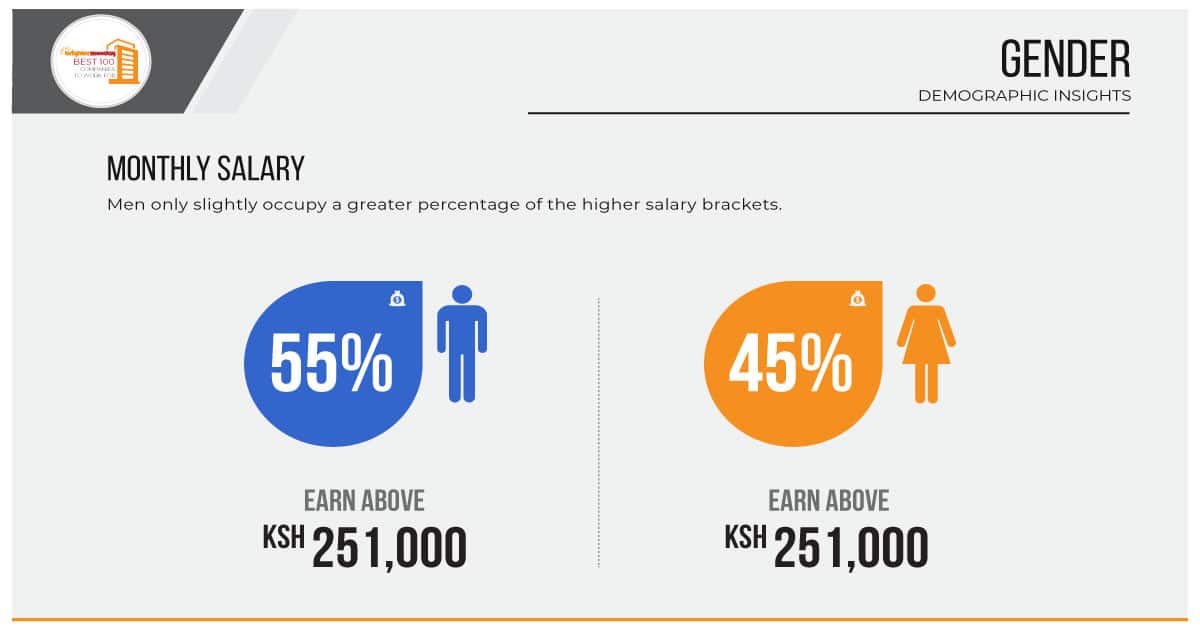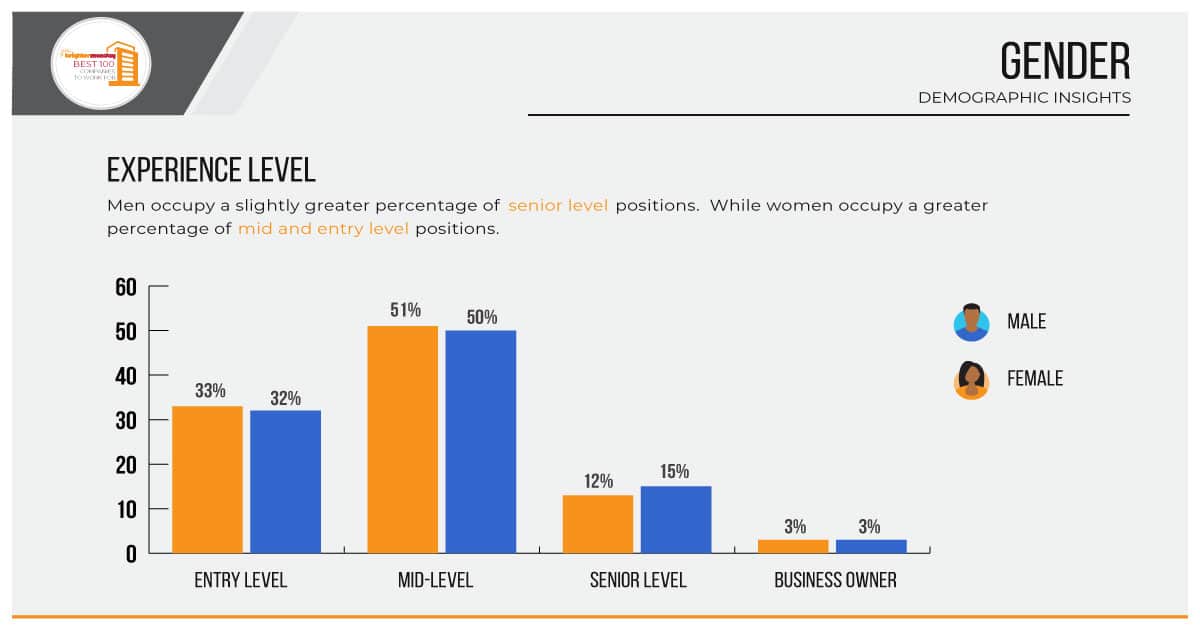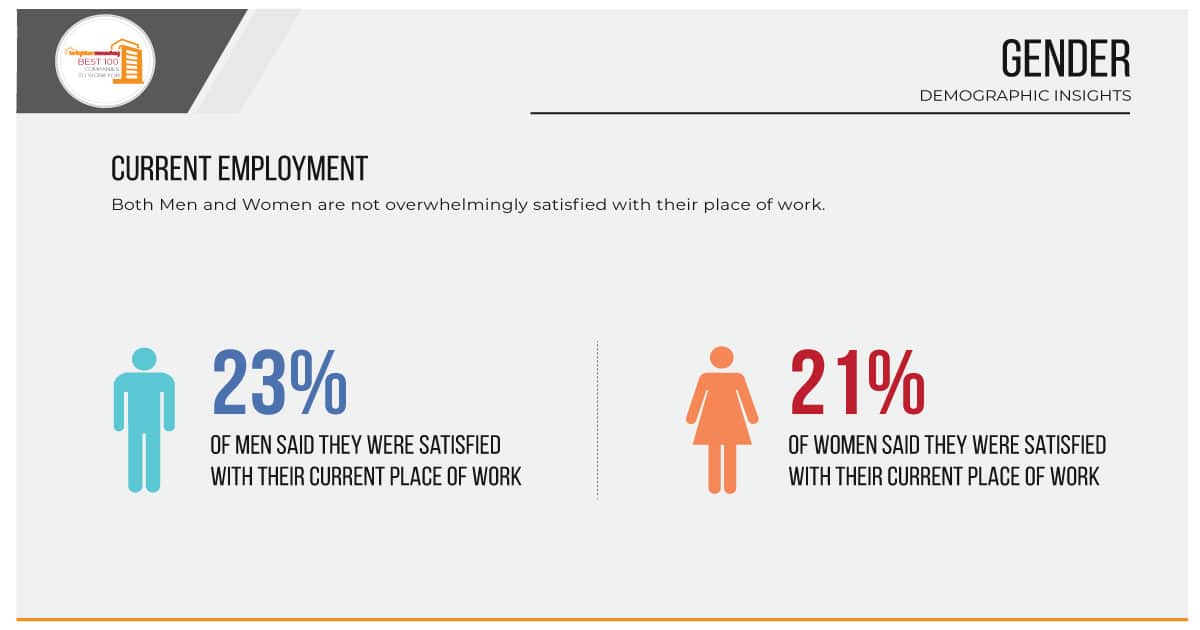If you ever get the opportunity to take a quick glimpse at your company’s payroll, you might be surprised to discover that there are male employees that earn higher than female counterparts in the same departments, undertaking similar roles and probably with the same educational background.
This is not an uncommon phenomenon in the Kenyan job landscape. A recent report on the best 100 companies to work for by BrighterMonday revealed that there were 10% more men in high salary brackets than women. While one might argue that there are more male employees in senior levels than women, another study by UNDP showed that there are glaring disparities in education and income between men and women across Africa and other parts of the world.

The World Economic Forum revealed in 2015 that a woman will be paid KES 62 for every KES 100 a man is paid for the same job. In 2017, the same forum predicted that it would take 100 years to close the gender gap. This means that women in the workplace have to wait another century to be paid equally as their male counterparts who match their education and skills background.
Table of Contents
Factors Around the Gender Pay Gap

1. Educational Attainment
Historically, boys have easier access to education. While the number of girls joining school is usually higher or equal to that of boys, girls are more likely to fall off along the way. Girls in rural areas also face more challenges trying to stay in school, including early marriages and missing school days for lack of sanitary towels. Ultimately, this is reflected in the difference between female professionals in the workplace in entry-level and mid-level positions as compared to those in senior positions.
2. Seniority in the Workplace

The Best 100 Companies to work for survey showed that there are more female employees in entry-level positions and the number keeps thinning as seniority progresses. Men occupy more senior positions than their female counterparts. While men and women may join the workplace in the same level, men have an easier upward mobility as compared to women. A study by Lean In points to the fact that women fall behind in the early stages of their careers and continue losing ground fast than their male counterparts.
3. Political Empowerment
To understand the gender gap, we have to look at the highest institutions in the country. Even with equality and representation firmly stated in the constitution, implementation is nowhere near ideal. The two-thirds gender rule continues to face silent rejection as parliament continues to stall implementation. You might wonder what political representation has got to do with the workplace. Truth is, with more women in key decision-making roles in the government, they are more likely to champion gender equality everywhere including the workplace.
4. Gender Occupational Segregation
The society has, for a long time, created demarcations in the job space by clearly defining jobs and employment for men and women. Jobs suitable for men were considered tasking, demanding and ‘masculine’. They also happened to pay substantially higher than the ‘feminine’ jobs that were less tasking and demanding, hence suitable for women. Gender occupational segregation brought about gender roles, stereotypes and socialisation that prepares men and women for gender-based jobs and consequently gender-based pay.
5. Culture and Traditional Family Roles

Traditionally women did majority of the housework and childcare while men went out to bring home the bacon and basically support everyone. This is still a general expectation in the modern world, despite the fact that bills and expenditure are now shouldered by both husband and wife, not forgetting the rise of the single-parent family. These days women are major family earners, meaning lower wages affect their family earnings and their own retirement.
Impact of the Gender Pay Gap in the WorkPlace
Lower engagement level in Female Employees

The BrighterMonday report showed that the general engagement level is at 27% with women showing lower engagement levels than their male counterparts. Finding out that your male colleague earns more, yet you are paid lesser than he is will definitely not do well to your motivation levels. In an age where women are now considered co-providers in families and main breadwinners in other situations, equal compensation to their male counterparts is a right.
Women Employees Pose Greater flight risk
Low engagement levels is the main cause of high attrition in the workplace. With women being less engaged than men, they prove to be a higher flight risk. More female respondents in a job market survey conducted by BrighterMonday said they were thinking of leaving their current employer if a better opportunity came by.
Reduced Upward Career Mobility for Female Employees
The main reason behind more men in senior positions that women is the fact that men win promotions more than women. They have an easier access to the top and are therefore more confident in the workplace to take on challenges. While it’s a more chicken and egg situation here (confidence coming from assurance of access to promotions and the other way round) women’s trek to the top is steeper. The Wall Street Journal points that a significant number of women admit that gender has played a role in their missed promotions and raises. A larger number strongly feel that the fact that they are women will make their career advancement harder to achieve in the future.
How to get Around the Gender Pay Gap
So, are women supposed to just sit around and wait for another century to get equal recognition and pay in the workplace? The answer is a resounding No. You can try to take control of your situation and ensure you get paid what you deserve for the work you are putting in. Here are a few pointers;
Upskill
Before you accuse your employer of discrimination, take an objective look at your qualifications and experience. Are you on the same level as the colleagues you are comparing payslips with? If you are a little lower, maybe it is time you went back to school. It doesn’t have to be a daunting process for you. Technology has made things easier. You can find, courses online and even get certified. This means you can add another feather to your cap without drastically changing your daily schedule.
Choose Your Employer
Is your employer keen on non-discrimination in the workplace? Is there a policy in your HR department that ensures all employees are treated equally? Do your research well before joining an organisation and ensure it is the right place for you to grow and thrive.
On the other hand, employers should also take the initiative to create workspaces that value diversity while promoting equality. Closing gaps in how employees are treated is not just a policy that will take a day to amend, it needs to be enshrined in the company’s DNA. Every business leader needs to ensure that all employees in their company are fairly compensated.
Get a Female Mentor or a Role Model in Leadership

While climbing the corporate ladder might be hard for women in the workplace, the journey can be easened by women who have gone ahead. Learn from women who have paved their way to the top. Read books on leadership, career development and moving ahead. If you can get a mentor, the better.
Have you been personally affected by the gender pay gap in anyway? Tell us in the comments below.





